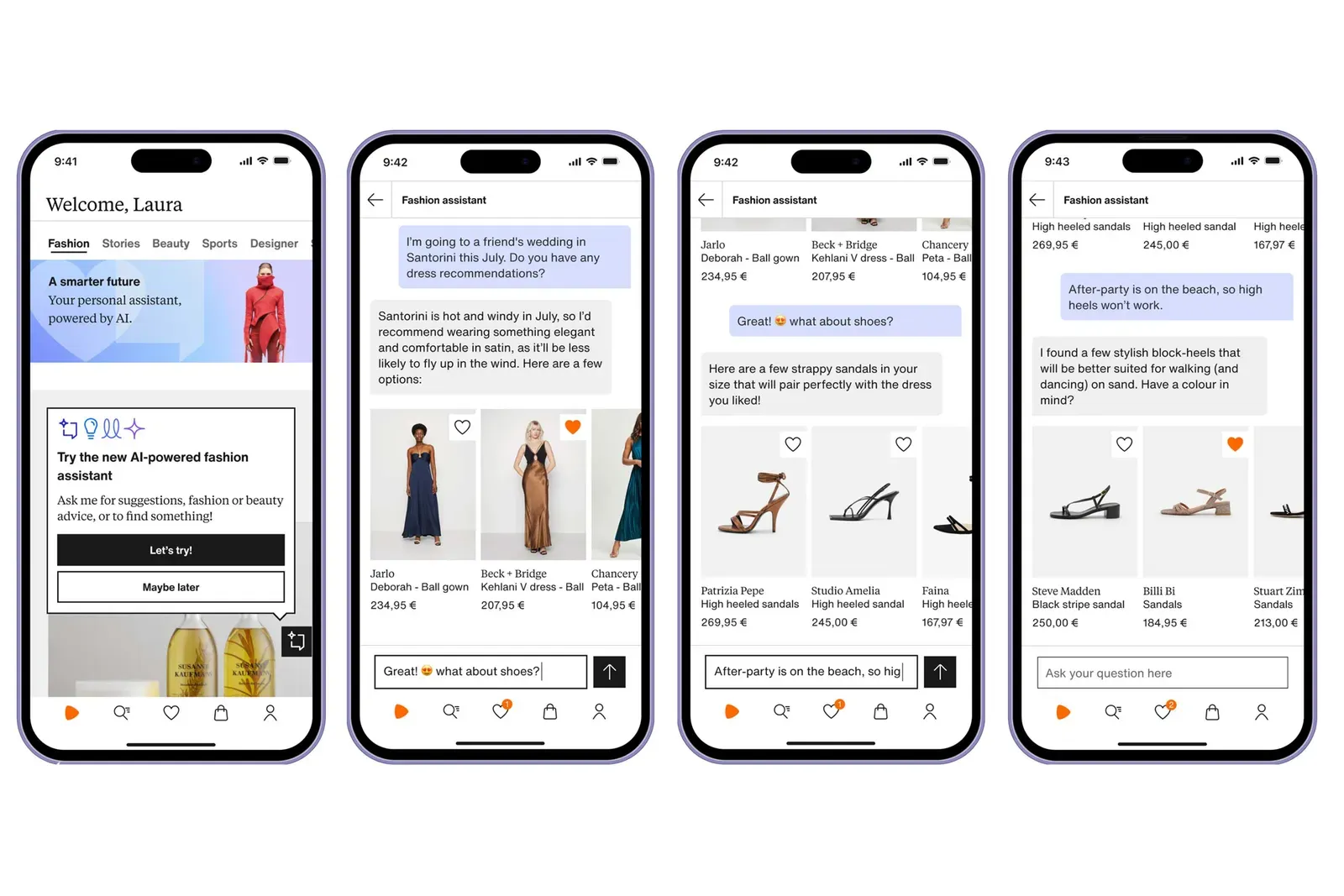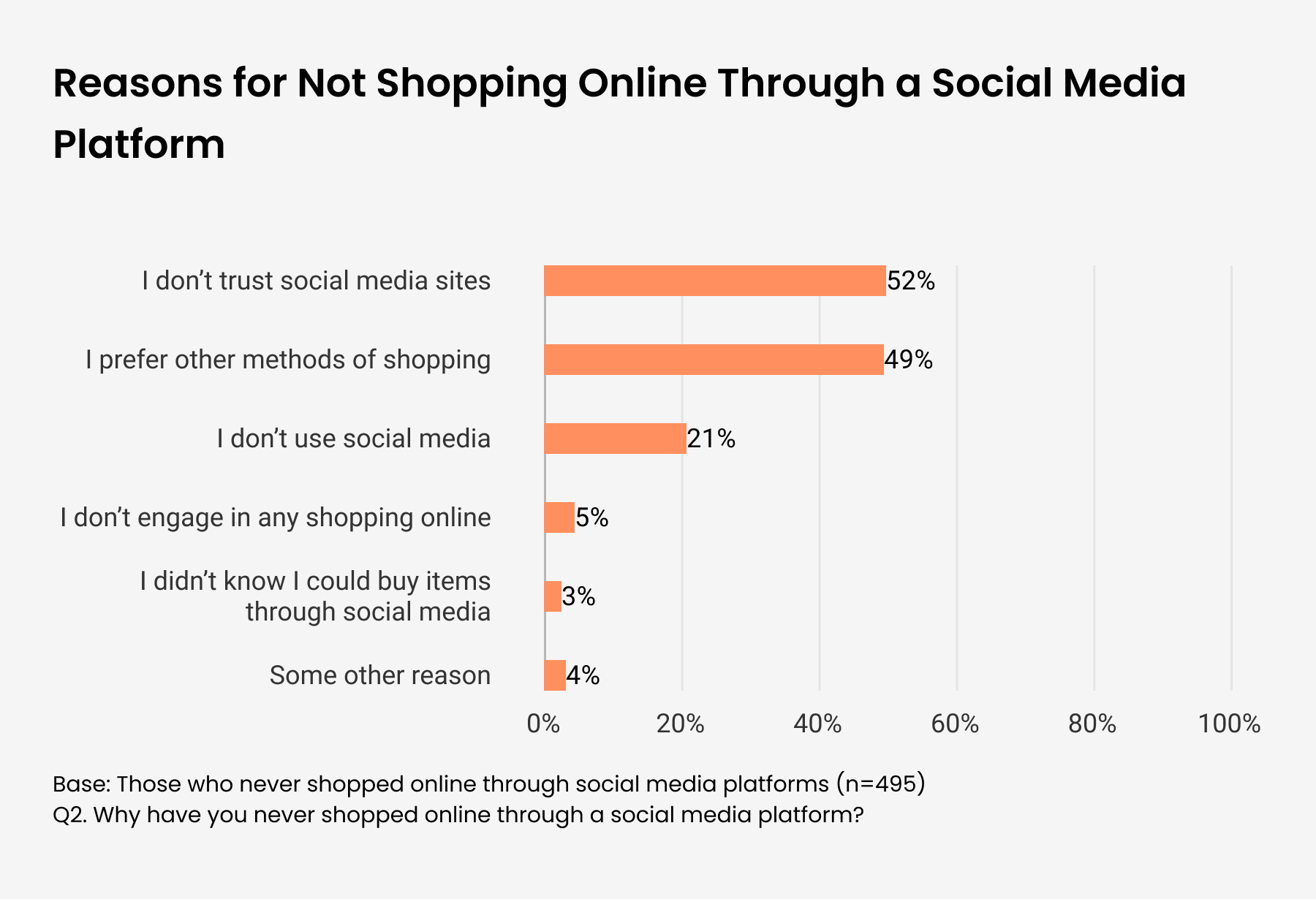How AI Personalization is Reshaping eCommerce in 2024

Your customers have a whole different understanding of “personalization” than you do.
Sure, the principle makes sense to them — who doesn’t love the idea of getting tailored service that matches their needs and shopping habits? Who doesn’t want merchants to treat them like humans and not numbers? But the forms of personalization they actually see from modern marketing almost never live up to these lofty goals.
Instead of taking a customer-centric approach to personalization, most brands fall into the trap of playing a numbers game, trying to juice conversion numbers with an increasingly cringy set of tactics — whether that’s inserting {fname} at the top of a promotional email, skimming LinkedIn for personal details to layer into a cold call, or the invasive tracking practices that we’re hopefully seeing less of in a post-cookie world.
Brands understand the perceived value of personalization — they understand why it’s important to people — but their tools and tactics sometimes fall short. At their worst, these tactics can inadvertently send the message that the individual buyer doesn’t matter at all.
eCommerce marketers have struggled to find the personal in personalization and, somewhat ironically, artificial intelligence can help. How? Read on.
When “personalization” fails to resonate with consumers
To be clear, your customers want personalization from you. Dozens of surveys and sources confirm this fact, including recent research from Deloitte, which found that 67% of people they surveyed confirm they spend more “when personalization reflects an understanding of them and anticipates their needs.”
Despite this desire, Deloitte’s research also underlines “a gap between brand intent and consumer perception” when it comes to customer experience. Marketers often congratulate themselves on their personalization efforts when, in fact, consumers fail to recognize these activities as personal at all.

Take this simple scenario. You’ve recently begun a BOGO promotion to move overstock before the season ends and you decide on a “personalized” email campaign to existing customers. For one customer, the top line reads: “Hey Jacqueline! We thought you might be interested in our once-a-year, buy-one-get-one faux fur coat sale! Get yours now!”
What's the problem? The customer doesn’t go by this name — that’s just the one on her credit card. Worse, the product you’re promoting doesn’t match her style, shopping habits, values, or immediate needs. Jackie (as she calls herself) lives in sunny California and wouldn’t be caught dead in a parka.

To be honest, most people are used to these sorts of clumsy personalization tactics. Jackie knows you’re just sending this promotion out to everybody on your list and it barely registers at all. Still, when Gmail suggests a few weeks later that she unsubscribe from your mailing list, she also finds it surprisingly easy to click “Yes.” (After all, your brand clearly isn't for her.)
How is AI personalization different from existing methods?
The root of the personalization problem is scale (which, ultimately, translates into considerations of ROI).
It's true that high-end consumer brands and retailers have long offered personal shopping services, and ABM (account-based marketing) has been on trend in both the B2C and B2B worlds for at least a decade now. However, these practices work best when high-ticket items and select customers make the investment of time and money worth it. The vast majority of brands struggle to support any level of personalization that their customers would recognize as such.
Today, AI-powered personalization stands to change eCommerce by delivering highly tailored and immersive customer experiences that are much closer to the mark than before, specifically through conquering the problem of scale.
AI does this in three ways:
- Data Analysis: eCommerce AI can analyze vast datasets (including browsing history, purchase patterns, demographics, and social media data) much better than humans to glean valuable insights about customer preferences and behaviors.
- Machine Learning and Natural Language Processing: Once data has been collected and analyzed, machine learning and natural language processing can help extract hidden patterns and create detailed customer profiles.
- Generative AI: Natural language processing and other forms of generative AI enable eCommerce brands to dynamically create content based on customer profiles, from product descriptions and ads to entire campaigns. Though still arguably in its infancy, this technology will increasingly play a role in personalization in the future.
AI Personalization for eCommerce: The Basics
Product Recommendations
One objection to personalization that you sometimes hear is that eCommerce is about the transaction. Too much focus on creating tailored customer experiences distracts from this goal, they say. You can talk until you’re blue in the face about how personalization creates loyalty, generates word-of-mouth advertising, or impacts customer retention — but unless that’s actually leading to sales, who cares?
This is why product recommendations should be at the heart of your eCommerce personalization strategy. While personalization can (and probably should) occur throughout the customer journey, product recommendations can immediately boost average order value (AOV) by enhancing product discovery — drawing attention to related items, complementary products, or add-ons that match a shopper's tastes. Purchase history and browsing behavior help algorithms present highly relevant products that encourage a more significant purchase, tailored to each customer.
- Tools to explore: AfterShip Personalization

Chatbots and Shopping Assistants
Perhaps the approach that best replicates customer service is using chatbots to provide instant answers and support. Chatbots can handle a large volume of customer queries simultaneously, making them highly scalable. This scalability is particularly beneficial during surges in inquiries, like during the crucial BFCM (Black Friday/Cyber Monday) period. It ensures that each customer receives a personalized experience without compromising on response times.
Virtual shopping assistants are another use case where AI personalization helps make the individual shoppers' digital experience more like a brick-and-mortar one. Today's most advanced versions of these bots can incorporate a GPT-like understanding of language and dynamic product recommendations to replicate the kind of personalized, attentive AI shopping assistance that customers might expect from staff on the floor of a boutique or luxury department store.

Ironically, in both cases, artificial intelligence helps brands deliver a more "human-like" experience at scale. While scripted chatbots have existed for decades, AI enhancements now offer highly personalized interactions by analyzing customer data, including browsing history, past purchases, and other relevant information. This personalization helps in providing tailored product recommendations, improving customer engagement, and increasing the likelihood of repeat customers.
- Tools to explore: AI PerfectBot (or similar apps) for Gorgias
Dynamic Pricing and Strategic Merchandising
Amazon pioneered dynamic pricing a decade ago by adjusting pricing and discounts based on market conditions and buyer attributes. The eCommerce giant has always considered itself a tech company first, so it's not surprising that it was an early adopter of machine learning — years before others in its space thought to do so.
Thankfully, these days, you don't need to be a massive company with hundreds of AI engineers to implement dynamic pricing strategies on your product detail pages (PDPs). AI allows turnkey pricing tools to be more granular, taking into account various factors such as demand trends, competitor prices, inventory levels, customer behavior, and historical sales data to offer a price or promotion most likely to secure a conversion.
- Tools to explore: AfterShip Personalization
Dynamic Content Customization
Whether you believe the hype around generative AI for eCommerce, it's undeniably having an impact of AI for eCommerce marketing as businesses increasingly incorporate it into their workflows. eCommerce marketers, in particular, are likely to take advantage of AI to help them repurpose existing content, quickly generate ideas, or enhance discoverability through applications like AI product tagging.
Instead of thinking of it as a way to shortcut creative production, however, brands are increasingly exploring the use of AI to provide a unique experience for each visitor. It could be in the future that no two customers will see the same version of your eCommerce website or product pages, the same way you receive different Google search results pages (SERPs) from the same query based on your history, location, and identity.
- Tools to explore: ChatGPT, Writer, AfterShip Personalization

Balancing Personalization and Privacy, or How To Avoid Being Creepy
A final consideration when implementing any personalization tactics — whether augmented by AI or not — is the limits of what your customers will tolerate. Weak personalization can subtly alienate customers, but coming on too strong also has negative effects.
For example, have you ever received a message from a salesperson that mentions something a little personal about you? (“Hey, I see you went to City State. Go Beaves!”) Ever suddenly start getting ads on your phone for a particular product or service after discussing it with friends in real life? Creepy, right?
The second example is particularly instructive because it highlights how AI-powered personalization can create the impression of violating your customers' boundaries, even when it's not. While social media apps don’t actually listen to your conversations, their algorithms are sophisticated enough to create the impression they do. This personalization leads, conversely, to mistrust.
As consumers become more used to living with algorithms, this sensitivity could diminish. However, for now, trust remains a major issue for online consumers. For instance, our 2024 study of social commerce adoption found that trust and security were cited as the primary reasons why some consumers were resistant to using platforms like Instagram Shopping or TikTok Shop.

Why AI is the Future of Personal
Many of the challenges we discussed at the start of this blog derived from the mismatch between intent and capability. eCommerce merchants intend to create customer-centric personalization across every touchpoint they can, but today's tech and tactics make it impossible to do so in a way that aligns with customer expectations.
By shortcutting the shortcuts, so to speak, AI personalization essentially closes this gap, making real, effective personalization available at scale. The technology has a lot of growing it can do, but it’s ready for primetime. You can read more about how AfterShip is innovating with eCommerce AI here.

